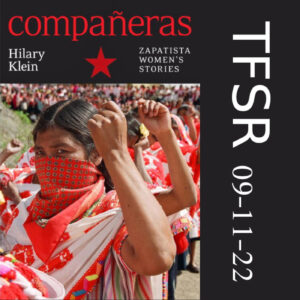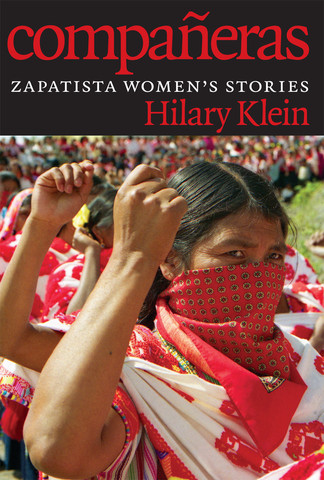Compañeras: Zapatista Women’s Stories (rebroadcast)

This week on the show, we re-air Amar’s 2015 interview with Hilary Klein, author/editor of the book Compañeras: Zapatista Women’s Stories, out from Seven Stories Press.
Over the hour, Hilary talks about her 7 years of living in Chiapas and recording the stories and experiences of women there, collecting stories on their behalf. The book covers the Zapatistas experiences before the EZLN uprising of 1994, during that period and after. Discussion address what gender, indigeneity and class looked like and how that’s changed in the Zapatista communities, the state of Chiapas and in Mexico. William and Hilary also explore the effects that the EZLN & La Otra Compaña have had on radicals and anarchists abroad, the origins of the EZLN, some parallels and distinctions between anarchism and Zapatismo and much more.
You’ll find a transcript of this audio available soon at our website. The book is also available for free reading on archive.org. Next week, stay tuned for another rebroadcast, with some new content coming up real soon.
Annoucement
Post-Release Funds for Maumin Khabir
from GoFundMe.com:
SUPPORT FUND FOR NEW AFRIKAN POLITICAL PRISONER ON HOSPICE, MAUMIN KHABIR! (SN MELVIN MAYES). CURRENT GOAL IS $3K FOR ESSENTIAL MEDICINE! Maumin Khabir served a 27 year sentence behind prison walls in North Carolina for a crime he didn’t commit. Declared a terrorist by the U.S. government, Khabir was targeted by RICO laws (a draconian set of laws that target individuals opposed to U.S. ideology) and captured in 1995. Maumin turned down a plea deal that would require him to confess to crimes he did not commit. As a political prisoner, he has remained an organizer, educator, and devote Muslim while on the inside. Maumin is a citizen of the sovereign Republic of New Afrika and his secession from the United States of America is the motivating factor behind the government’s prosecution and has no criminal basis. Maumin asks the court to recognize him as a political prisoner in accordance with the Geneva Conventions of 1949 and Protocol 1.
In February, Maumin was granted compassionate release by the courts due to his severe chronic obstructive pulmonary disease (COPD). He is now in the care of people who love him but it is still a very difficult situation. Maumin is on 24hr oxygen and can hardly move and it’s overall difficult to care for him. We are raising funds for to support Maumin’s care, to ensure it is the best it can be right now, and so his family who cares for him can give him a proper burial after he transitions. We ask you to share this link and donate what you can! We need money for medication, medical bills, and hopefully new transportation so Maumin can see loved ones and make appointments. Thank you for your support! Free The Land!
. … . ..
Featured Tracks:
- Politiks Kills (Prince Fatty Instrumental) by Manu Chao from Politiks Kills single
- Himno Zapatista (track #20) from Antología Musical Zapatista
- Por El Suelo by Manu Chao from Clandestino

